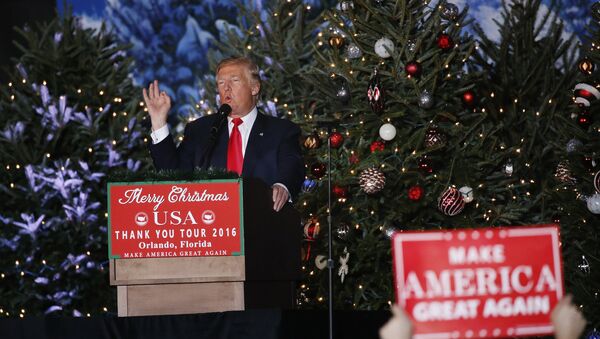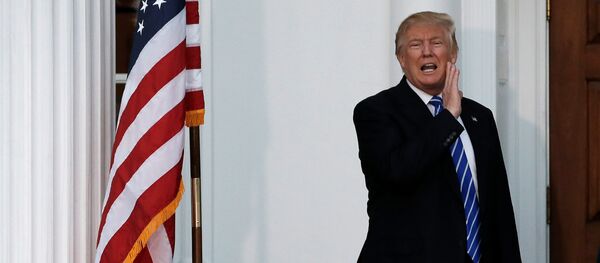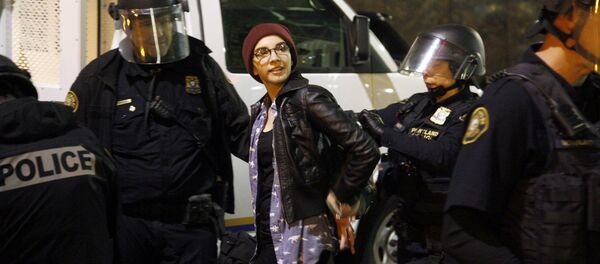Police shooting protests
Groups such as the Black Lives Matter movement led nationwide protests throughout the year after police-involved shootings of African-American men. In January, 25 people were arrested when thousands of activists blocked the bridge connecting the cities of Oakland and San Francisco in the US state of California. Demonstrators demanded the resignation of city officials, including Oakland’s mayor and the police chiefs of both cities, due to the deaths of African-Americans at the hands of police in recent months.
In May, 33 protestors were arrested in a rally calling on the San Francisco police chief to step down. A couple months later the protesters went on a hunger strike after two police shootings of minorities and news of officers exchanging derogatory text messages. On May 20, San Francisco Police Chief Greg Suhr resigned a few hours after an officer shot and killed a 27-year-old woman while trying to get her out of a crashed stolen car.
Protests erupted in Baton Rouge, Louisiana after the July 5 shooting death of 37-year-old Alton Sterling by two police officers. A video emerged shortly after the shooting depicting officers holding Sterling down before shooting him multiple times. The head of Baton Rouge’s chapter of the National Association for the Advancement of Colored People (NAACP) Michael McClanahan called for immediate action.
"What I’m calling for today is that the chief law enforcement officer, which is the mayor, to fire the chief of police immediately," McClanahan stated. "I demand that he resign if he has the guts."
On July 6, law enforcement officers shot 32-year-old Philando Castile after he was pulled over for a broken tail light in Falcon Heights, Minnesota. A video posted on Facebook captured the incident, supposedly triggered by Castile telling the officer he had a firearm and permit to carry it, which prompted a response from the White House
"What's clear is that these fatal shootings are not isolated incidents," President Barack Obama said in a statement shortly after the shooting in Minnesota. "They are symptomatic of the broader challenges within our criminal justice system, the racial disparities that appear across the system year after year."
One day later five police officers in Dallas, Texas were shot and killed during a protest triggered by the deaths of Sterling and Castile. Dallas Police Department Chief David Brown said the suspect "was upset about the recent police shootings. The suspect stated he wanted to kill white people, especially white officers." Officers were able to kill the suspect with a remote controlled bomb.
In response to the deadly shooting at the Dallas protest, the New York City Police Department announced it would increase patrols at future protests. New York Mayor Bill de Blasio said "We are going to make sure there are plenty of officers to keep everyone safe so our officers have plenty of backup and support." On July 12, President Obama spoke out about the protests taking place in Black Lives Matter rallies across the country against the police shootings.
By August, unrest in Milwaukee, Wisconsin forced the city’s mayor to put a teen curfew in place. Dozens of people were arrested when some 100 protesters clashed with police near the site where an armed 23-year-old was shot and killed by police. Rioters injured four officers, damaged seven squad cars and set six businesses on fire. Despite the Wisconsin National Guard helping the police the next day, an 18-year-old was shot while four more officers were wounded after protesters hit them with rocks and bricks.
Anti-Trump rallies and protests
Civil unrest took center stage many times during the 2016 President Election between Republican Presidential Nominee Donald Trump and his Democratic rival Hillary Clinton, both during the campaign and after Trump won the election on November 8.
On May 24, anti-Trump protesters threw rocks at police horses and lit fires late outside an Albuquerque Trump rally, after the presidential contender won the Washington state primary. On Thursday, June 2, Trump supporters were attacked by anti-Trump protesters in the Californian city of San Jose outside an official Trump rally. Trump's opponents threw eggs, bottles and food at their rivals.
The US city of Cleveland, Ohio was bracing for violence during the Republican National Convention in July when the Republican Party officially named Trump its nominee. At least 4,000 US federal security personnel and thousands of state and local police were on hand during the convention. Cleveland police arrested 17 people after a fight broke out on July 21, but all other protests during the nearly week-long convention were relatively peaceful.
Also in July, the Democratic National Committee held its nominating convention for Hillary Clinton in Philadelphia, Pennsylvania. Hundreds of supporters of Clinton’s primary opponent, Vermont Senator Bernie Sanders, went to the convention to call on Clinton to withdraw from the race.
"I am marching to bring awareness to the election fraud that’s taken place in our country this year and to make a statement that we the people are not okay with it," Sanders supporter Graeme Cabrera told Sputnik. "We are not okay with the Democratic establishment continuing to disenfranchise us and then ask for our vote."
A number of Sanders supporters also left the convention floor after Clinton’s nomination and between 50 and 100 protesters stormed the media tents outside the arena while chanting "the whole world is watching," a Sputnik reporter observed.
Within hours of Trump declaring victory in the US election in the early morning hours of November 9, demonstrations took to the streets in New York City, outside the White House and in the US states of California, Oregon, and Washington, among other locations, with many holding signs that read "Not My President" and "Trump Makes America Hate."
Many of the protesters were upset because although Trump secured more than the 270 electoral votes need to win, Clinton won the popular vote by around 2.5 million.
Throughout the following day protesters marched in front of Trump Tower in New York City, and in front of Trump’s new hotel in Washington, DC. New York City police arrested 65 people "for disorderly conduct, obstructing governmental administration and resisting arrest," Lieutenant Thomas Antonetti told Sputnik.
While President-elect Trump met with President Obama at the White House on Thursday, November 10, protesters gathered outside the gates. In Portland, Oregon, demonstrators threw rocks and vandalized cars, forcing police to intervene in the protest involving around 4,000 people.
"Due to extensive criminal and dangerous behavior, protest is now considered a riot," the Portland police said in a Twitter message.
Hundreds of people were arrested over the next two days, including 100 in Portland and 330 in Los Angeles, with one officer injured. Trump accused the media of stirring up the protests in several Twitter messages.
"Just had a very open and successful presidential election. Now professional protesters, incited by the media, are protesting. Very unfair!" Trump said in a Twitter post.
Drexel University Professor of Political Science William Rosenberg told Sputnik the nationwide protests that erupted across the country after the New York billionaire’s victory were unprecedented and largely fueled by anger and fear among younger people and minorities who just could not fathom life under a Trump administration.
Another civil unrest
In January, sixteen members of a militia led by Ammon Bundy took control of the Malheur National Wildlife Refuge in the US state of Oregon, in protest of alleged discriminatory federal land management policies. On January 26, the FBI and Oregon State Police arrested eight militia members and shot and killed one. The next day another eight surrendered after Bundy released a statement.
The final four militia members surrendered on February 11, six weeks after the occupation started. On October 28, Bundy and six others were found not guilty of all charges in connection with the occupation, including conspiracy to intimidate federal employees and weapons charges.
Thousands of people, including Native Americans representing tribes throughout the country camped out near the Standing Rock Sioux Reservation in the US state of North Dakota in 2016 to protest the construction of the Dakota Access Pipeline.
The $3.7 billion project is intended to transport domestically produced light crude oil from North Dakota through the states of South Dakota and Iowa into Illinois. Tribal leaders have argued that construction of the pipeline has destroyed sacred tribal lands and could pollute water from the Missouri River's Lake Oahe reservoir.
In December, the US Army decided not to "approve an easement that would allow the proposed Dakota Access Pipeline to cross under Lake Oahe in North Dakota."
The incoming Trump administration said it will review the Army decision and make a determination of its own once in office. Veterans Stand For Standing Rock spokeswoman Ashleigh Parker told Sputnik that Dakota Access Pipeline protesters will continue fighting if Trump overturns the US Army Corp of Engineers order that brought construction to a halt.







